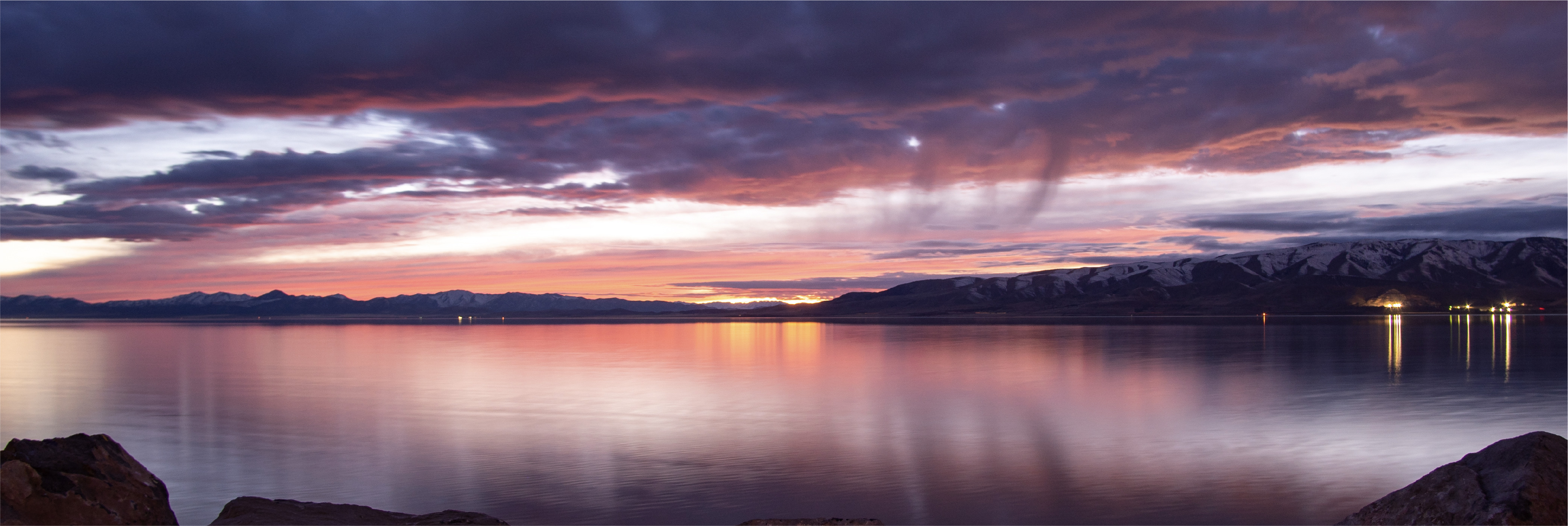
The introduction of non-native fish species to Utah Lake began in the late 1800s and has changed the lake’s fish community dramatically. Initially, 13 fish species could be found in Utah Lake. Today, only three of those species are still present — the June sucker, Utah sucker and Utah chub while many non-native fish dominate the ecosystem.
Over 20 different non-native fish species have been introduced into Utah Lake over the years, and several have become established as self-sustaining populations. Among those that have been particularly successful include the common carp, white bass, black bullhead, channel catfish, and walleye. In recent years, northern pike have also been illegally introduced to Utah Lake. When a new non-native population becomes established, it can be destructive to the lake's entire ecosystem. Recovering the June sucker population and restoring balance to the Utah Lake fish community requires active management of these non-native fish species.
The June Sucker Recovery Implementation Program has worked to remove 29 million pounds of carp, a fish that has caused much damage to Utah Lake, and is monitoring an emerging threat from northern pike.
Carp Removal Program
Removing non-native carp from Utah Lake is one of the most critical tasks to allow the June sucker’s recovery. Since carp were introduced to Utah Lake by the U.S. Government as a food source in the late 1800s, they have been blamed for degrading water quality, for loss of biodiversity, and for significantly altering the lake’s ecosystem.
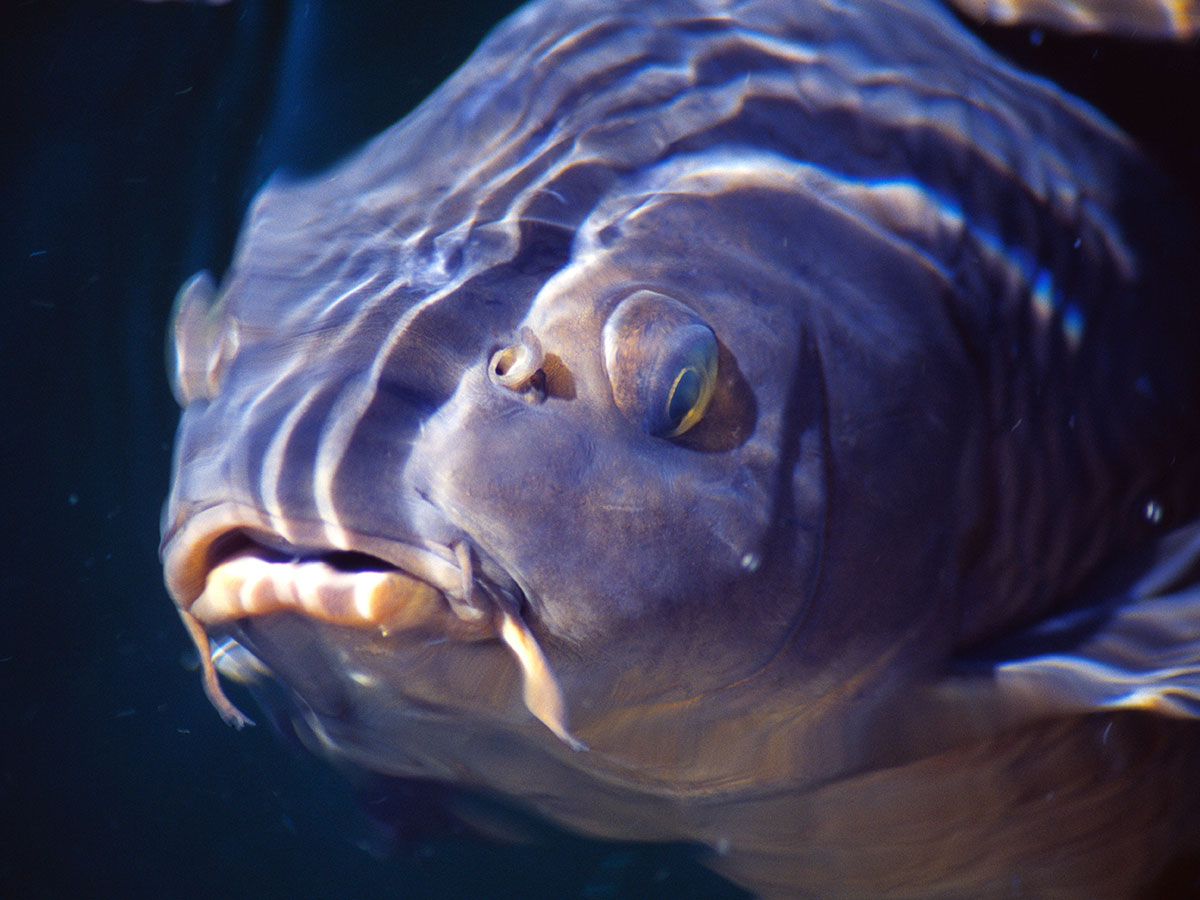
Through their feeding behavior, carp rip through the sediments of a water body looking for food and in doing so, they remove underwater vegetation which serves an important purpose as refuge habitat for young fish to avoid predation.
As the carp population increased in Utah Lake, this important refuge habitat disappeared, and the only solution to restore this habitat was for the JSRIP to remove carp. If left unchecked, the carp would prevent recovery of the June sucker and reduce the lake’s recreational uses and overall attractiveness. In the early 2000s, carp represented an overwhelming 91 percent of the total fish biomass in the lake.
A Massive Effort
In February 2010, after years of studying, planning, and seeking funding, the JSRIP initiated a large-scale effort to reduce the enormous population of common carp in Utah Lake.
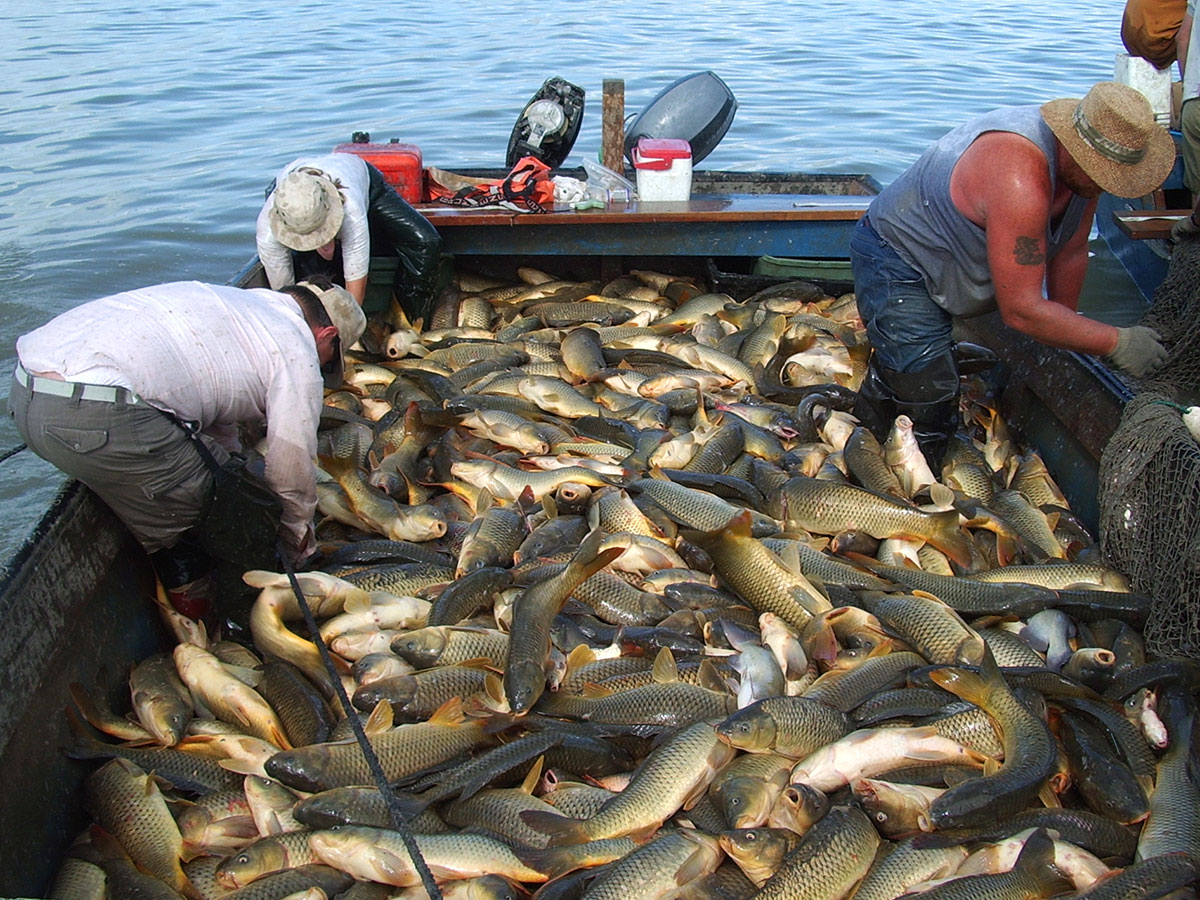 Ten years later, the removal effort is going strong and through commercial fishing over 29 million pounds of carp have been removed from Utah Lake.
Ten years later, the removal effort is going strong and through commercial fishing over 29 million pounds of carp have been removed from Utah Lake.
While the project has been successful, it has definitely had its ups and downs. As carp congregate under the ice of Utah Lake, winter has been an especially productive time for removal. However, Mother Nature threw us a curve ball and during the winter of 2015, ice conditions were never suitable to support the equipment necessary for removal through the ice. Removal can also be difficult in the late spring and early summer, but in the summer of 2015 a declining lake level reduced the areas where carp could avoid the nets deployed by the commercial fishing operators and a record number of carp were harvested in June of 2015.
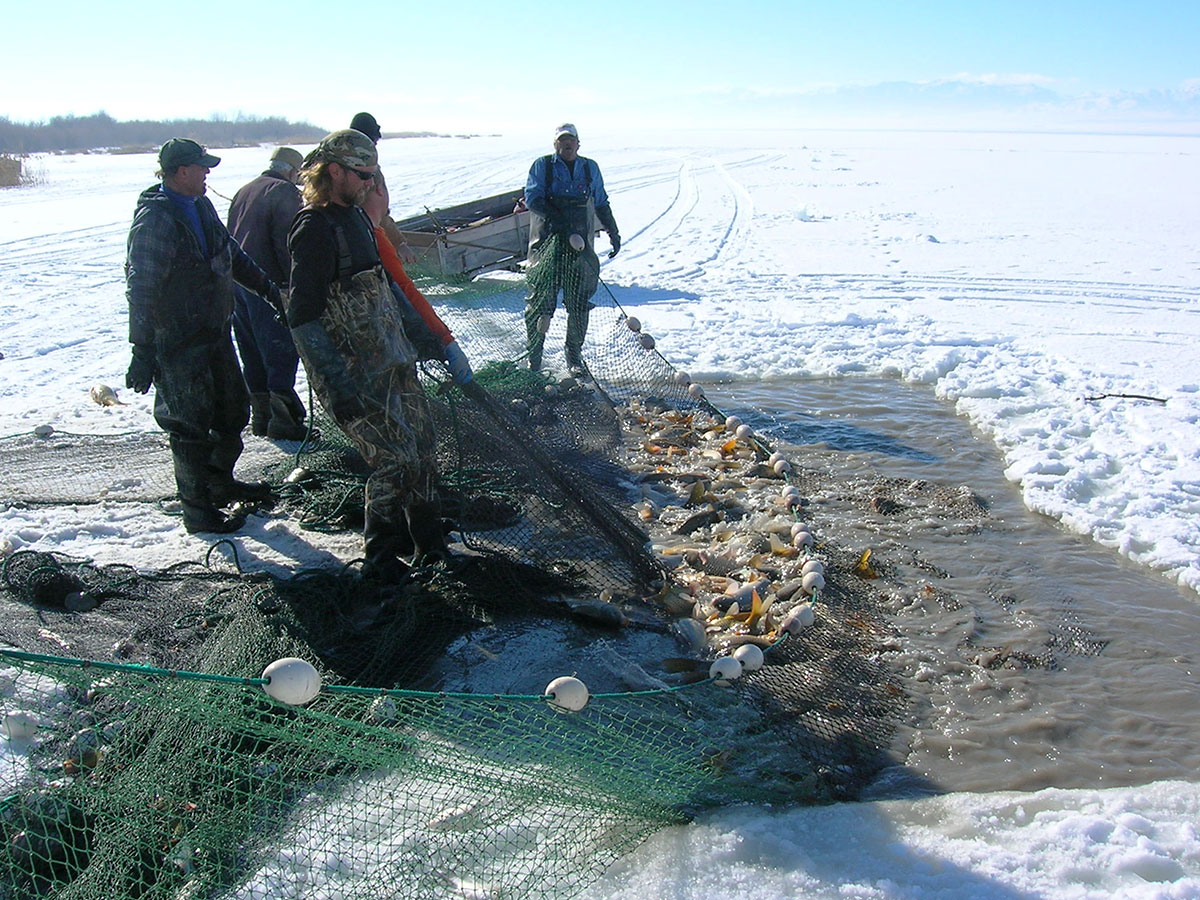
Riding through these boom and bust cycles imposed by the weather or other factors have allowed the carp removal effort to be successful. With an average annual harvest rate nearing four million pounds, the carp population is being reduced.
Monitoring efforts have recorded a 78% decline in carp density since 2012. Researchers have also tracked the return of underwater vegetation in some areas of the lake, something that was unheard of when the project was implemented. The ingenuity and adaptability of the commercial fishing company (Loy Fisheries) has helped the project be successful to this point.
Large Benefits to Utah Lake Ecosystem
Thanks to the financial support and partnership of State and Federal partners, the carp removal program has had an impact on both the June sucker and Utah Lake itself. While removing the invasive carp benefits the June sucker directly so it can naturally reproduce and recruit young fish into the adult population, the larger benefits are to the Utah Lake ecosystem. Less carp reduces internal nutrient cycling, which reduces the potential for harmful algae blooms. Less carp also means more resources, including habitat and food, are available to support other species in the lake.
Benefits include:
- Anglers report improved fishing and larger fish
- Scientists have seen the return of nutrient-rich aquatic vegetation that provides improved habitat for fish and birds
- State agencies are detecting improved water clarity
- Carp numbers are at point where they can be kept in check
Assessing the Northern Pike Threat
Northern pike (Esox lucius) are not native to Utah, but were detected in Utah Lake by an angler in 2010 after an apparent illegal introduction. Although northern pike can be a desirable sportfish in other waters, their presence in Utah Lake threatens the recovery of the June sucker and the Utah Lake fish community as a whole. Several aspects of the ecology of northern pike increase the threat they pose to June suckers.
Threats to June Sucker
First, northern pike are piscivorous (fish-eating) fish with large mouths. This means that compared to other predatory fish, northern pike can eat larger prey relative to their own body size. June sucker are currently stocked at a size large enough to escape predation by most other fish in Utah Lake (e.g., walleye, white bass, catfish). However, since pike can eat larger fish, increasing numbers of the adult June sucker population are vulnerable to predation from pike. This could decrease post-stocking survival and force the recovery program to consider stocking even larger June sucker, if financially viable.
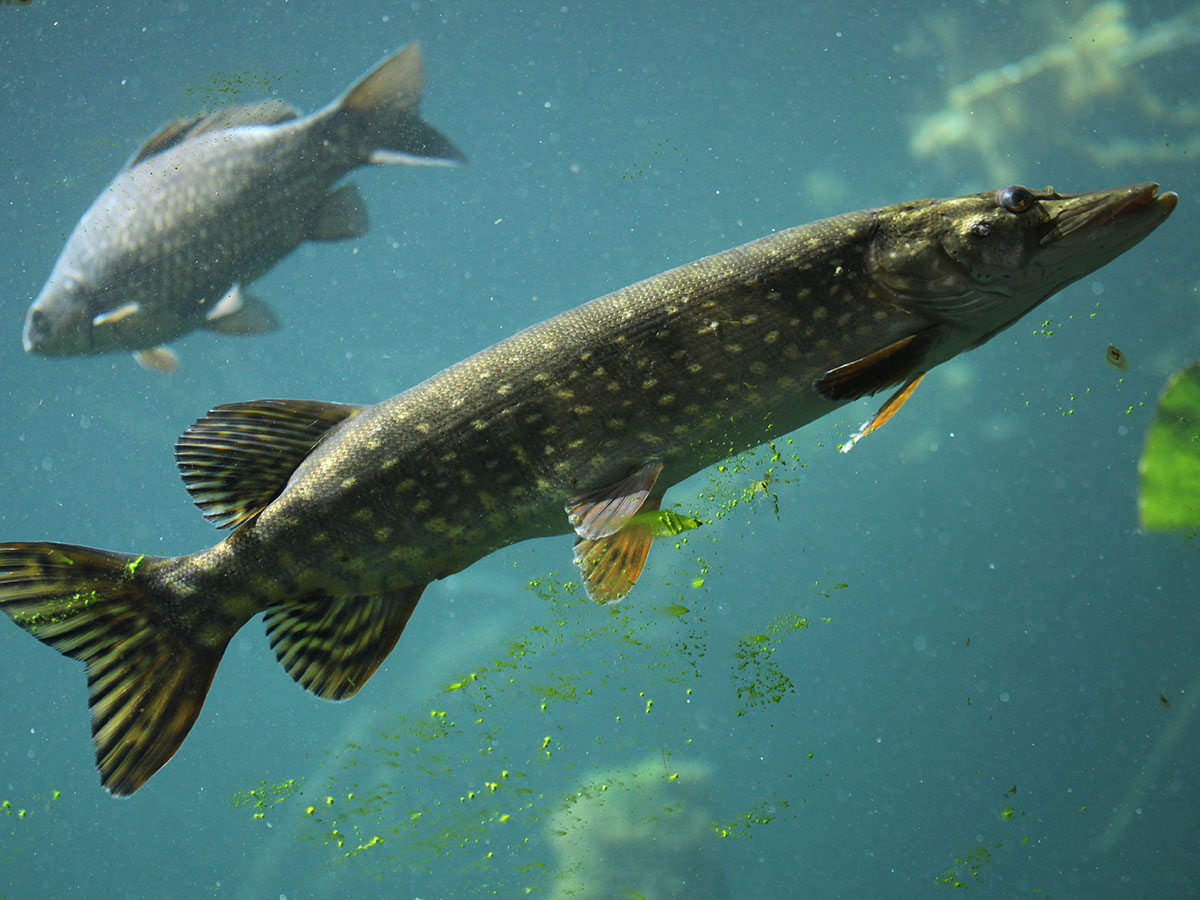 Second, northern pike grow quickly. In optimal growth conditions, males can reach spawning size by age one. This means the population can grow quickly, outnumbering and overwhelming potential prey populations. In addition, the fast growth rate combined with a large mouth means that juvenile pike become piscivorous by the time they reach 40-80 mm, which can be within a few weeks or months of hatching.
Second, northern pike grow quickly. In optimal growth conditions, males can reach spawning size by age one. This means the population can grow quickly, outnumbering and overwhelming potential prey populations. In addition, the fast growth rate combined with a large mouth means that juvenile pike become piscivorous by the time they reach 40-80 mm, which can be within a few weeks or months of hatching.
Third, northern pike prefer shallow, vegetated habitats, especially for spawning. These habitats are often in rivers and river deltas, such as the Hobble Creek restoration area, that are also used by June sucker for spawning and nursery habitat. Although pike spawn earlier in the spring than June sucker, some adults may stay in these habitats, posing a threat to both adult and juvenile June suckers. In addition, young-of-year northern pike (i.e., those hatched in the current year) likely use these habitats also. The young-of-year pike could easily prey on larval and juvenile June suckers when they hatch in late spring and early summer.
The overlap in habitat, as well as aggressive predation by northern pike of almost all sizes, means that northern pike pose a large threat to nearly every size class of June sucker. Predation on adult June sucker would lead to less efficient stocking and fewer spawning adults, while predation on larval and juvenile June sucker would further reduce reproductive success. These effects threaten to negate the recent successes of the JSRIP.
Threats to All Fish
Northern pike also threaten the rest of the fish community in Utah Lake, for many of the same reasons that they threaten June sucker. Their large mouths and early piscivory allow pike to feed on relatively large sportfish, such as largemouth bass, yellow perch, white bass, walleye and others; they will also target the young of popular sportfish. An example of the effects of northern pike on a sport fishery can be seen in Yuba Reservoir, where upon refilling of the reservoir, pike quickly became the dominant species, outcompeting walleye and yellow perch. In just a few short years, the fish community was transformed into a near monoculture, consisting of northern pike and common carp and fewer walleye and yellow perch. A similar fate could await Utah Lake in the long term if northern pike populations continue to expand.
The northern pike population is still relatively small, but the JSRIP is taking the threat seriously. A Utah State University study, funded by the recovery program, is currently underway to quantify the potential effects of northern pike on June sucker populations.
Additionally, the Division of Wildlife Resources (DWR) has begun sampling efforts to identify spawning locations for northern pike and evaluate potential removal and control efforts. The DWR has also imposed a catch and kill regulation on northern pike in Utah Lake, meaning that any angler who catches a northern pike cannot return it to the water. The recovery program and the DWR are working with anglers to collect northern pike specimens to contribute to the Utah State University research. Hopefully, with swift action and close cooperation, the threats from northern pike can be reduced enough to allow successful recovery of June sucker and reduce impacts to the sportfishery in Utah Lake.
Special Thanks to...
- Utah Department of Natural Resources
- U.S. Fish & Wildlife Service
- Bureau of Reclamation

